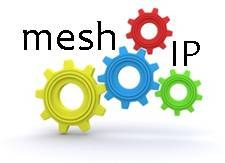 For years, enterprise IT departments could be fuzzy about the costs of individual IT services and applications, but tight budgets and the relative clarity of cloud computing costs have forced CIOs into sharp focus.
For years, enterprise IT departments could be fuzzy about the costs of individual IT services and applications, but tight budgets and the relative clarity of cloud computing costs have forced CIOs into sharp focus.
This need for specifics on IT costs has fueled a market for IT financial management software, which helps CIOs figure out how to budget for and assign dollar figures to services that span hardware, software and personnel.
While the economy has necessitated cost containment, the availability of on-demand computing capacity, storage and applications from cloud providers has intensified the pressure on internal IT to be more transparent – and more competitive – about costs.
“In the past, if you didn’t have good visibility into your IT costs, it probably would be frustrating to business stakeholders. But what could they really do?” says Barbara Gomolski, managing vice president at Gartner. “Now, if you don’t have good visibility into what it costs to provide storage or network connectivity or e-mail, the business stakeholders can easily go out to the external market and say, ‘Well, so-and-so can provide it for $5 per month per mailbox, and I think we ought to do that.'”
With a better understanding of spending, IT teams can begin to satisfy increasingly tech-savvy business managers who want to know more than simply how much is spent on, say, desktops. Today’s business managers want to know what it costs to provide enterprise mobility, for instance, and they want to see the big picture. They’re asking for cost models that take into account hardware, software, labor and maintenance costs, plus distinguish between different service levels and deployment scope, Gomolski says.
At First Horizon National Corp., business leaders from the company’s banking entities were hungry for more detailed IT cost data. “We were having a difficult time explaining to our business segments why their IT costs were growing,” recalls Ann Fite, finance director at the Memphis, Tenn., financial services company. “Technology can sometimes seem like a black hole to people who aren’t involved with it.”
First Horizon invested in IT financial management software from Digital Fuel, which allows the bank’s users to see a bottom-line tally of how much it costs to run a particular application, such as a deposit or loan application, plus a detailed breakdown of the expenses. This helps the business leaders understand the costs of requests for new features or regulatory changes, for instance, compared to hardware and software maintenance, Fite says.
First Horizon has only been using Digital Fuel’s applications for a couple of months, but already “we’ve had a lot of success making application costs more transparent to the lines of business,” Fite says. Going forward, First Horizon plans to use the software to identify redundant application development requests, for instance, and to run analyses of proposed IT initiatives to determine their cost effectiveness.
Smarter spending
Overall, the trend toward greater visibility into IT costs is a good thing for the industry. It means businesses are getting smarter about technology investments, Gomolski says.
“Organizations that have made the investment [in IT financial management] are able to recognize areas where they’re currently spending money but should not be – services that are underutilized or cost disproportionately more than the value they deliver,” Gomolski says. “We’re finally learning how to make our investments a little bit more intelligently.”
Getting to full IT cost transparency is no easy feat, however.
For starters, IT managers are expected to pay more attention to budget and planning practices — adjusting budgets according to actual costs and revised operational targets, for instance — which isn’t a traditional strength of the tech-centric IT professional.
“If you come to a storage line manager and tell him that he has to start doing budget re-forecasting every month, he’s going to look for a tool that does it automatically,” says Yisrael Dancziger, president and CEO of Digital Fuel.
With the right tools, IT budgets can become dynamic resources that reflect actual usage costs and allow for automated adjustments (as revenue targets and headcount change, for instance) rather than static documents that are quickly outdated. The ability to do fact-based budgeting, based both on the demand of the business units as well as historical metrics, makes a big difference, Dancziger says.
Digital Fuel makes such a tool – an entire suite of tools, delivered via a software-as-a-service model – as do other IT finance specialists such as Apptio and ClearCost. Larger IT management vendors also offer financial management software, including BMC (which acquired ITM Software in 2008), CA and HP.
The tools are designed to consolidate IT financial metrics and perform functions such as budgeting, cost modeling, chargeback and vendor management. They’ve been around since 2000, but early options were immature and didn’t cover the breadth of IT functions required, says Gartner’s Gomolski. Now they’ve matured. “Tools today are able to provide a more end-to-end view,” she says.
For First Horizon, the SaaS model is a good fit, since it’s a non-core application and the hosted model allowed for a fast deployment, Fite says. “The most cost-efficient avenue for us was to allow Digital Fuel to run this application and for us to piggyback off their expertise,” she says.
Digital Fuel’s Dancziger says potential customers are comfortable with the SaaS model, though they insist on getting the details about the company’s security infrastructure.
“We’ve had to invest a lot in security capabilities in order to be able to convince companies like Deutsche Bank, Capital One and IBM to put their general ledger expense information into a solution like this. But they’re doing it,” Dancziger says.
Superseding spreadsheets
For many companies, financial management software is a replacement for scores of spreadsheets. The software does the heavy lifting – collecting structured and unstructured data from all over the enterprise, cleaning it, and normalizing it so it can be analyzed. Standard reports make it easy to view broad metrics such as IT spend as a percentage of company revenue, as well as more technically detailed reports such as a cost comparison of Windows, Linux and Unix servers, broken down by the hour.
Having that kind of data enables IT teams to more clearly articulate how tech investments translate to business value.
“It’s about more than just understanding costs and reporting those costs,” notes Jeff Day, director of marketing at Apptio. “It’s about budgeting, forecasting and cost optimization. It’s about helping IT finance groups and the CIO run the business of IT.”
Armed with better data and a clear business rationale, IT is better positioned to get the green light on proposed projects. “A CIO can talk the language of the business and say, ‘here’s how much this technology is going to cost to do, here’s how much it’s going to cost to maintain year after year, and here’s the business value that it’s going to bring, in terms of productivity, increased revenue or customer loyalty,'” Day says. “When a CIO can talk in those terms, it shifts the role of IT from just a cost center to a strategic partner to the business.”
IT financial management software also can help IT users identify areas where they can reduce costs — servers that are good candidates for consolidation or virtualization; applications that might be ready for retirement; opportunities for tiered storage; and support contracts that might not be worth continuing.
“This is not just about cost accounting. This is about looking at the cost vs. the value and helping the business to say, ‘this is not a good way to spend our money,'” Gomolski says.
IT often gets nowhere when it suggests shutting down a legacy application without providing numbers to back up the suggestion. By making it clear how much you’re spending and the amount of resources an application is consuming, IT can turn the tables and put the question to the business person, Gomolski says.
“‘You tell me: Are you getting enough value to justify that?’ A lot of times they’ll say ‘turn it off.'”
- The Customer Edge Drives the Need for NaaS - June 25, 2023
- Blockchain Evolves And Secures - January 13, 2019
- Bessemer Ventures’ 2018 Cloud Computing Trends - February 25, 2018




